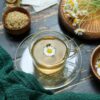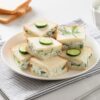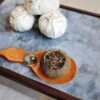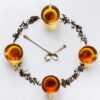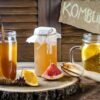
Welcome to the ultimate guide on choosing the perfect tea kettle, the essential companion for your tea ritual. Whether you’re a tea enthusiast or a casual sipper, finding the right tea kettle can elevate your tea experience to new heights. In this comprehensive guide, we will walk you through the crucial factors to consider when selecting a tea kettle that suits your needs and preferences.
From materials to construction, design to functionality, we’ll explore everything you need to know to make an informed decision. Are you partial to traditional cast iron or sleek stainless steel? Do you prefer a whistle or an electric kettle? We’ve got you covered.
Not only will we delve into the various types of tea kettles available, we’ll also highlight the pros and cons of each, helping you narrow down your options. Additionally, we will provide useful tips on caring for and maintaining your tea kettle to ensure its longevity.
So, get ready to embark on a journey to find the perfect tea kettle that complements your tea drinking style and becomes an indispensable part of your tea time routine. Let’s dive in!
Why choosing the right tea kettle matters
Choosing the right tea kettle is important because it can significantly enhance your tea drinking experience. A tea kettle is not just a vessel for heating water; it is an essential tool that affects the flavor, aroma, and overall enjoyment of your tea. The right tea kettle will help you achieve the optimal water temperature for brewing different types of tea, ensuring that you extract the full range of flavors from the leaves.
Moreover, a well-designed tea kettle can add a touch of elegance and sophistication to your tea ritual. It can become a centerpiece of your kitchen or tea table, reflecting your personal style and enhancing the overall ambiance. A tea kettle that is both functional and aesthetically pleasing can make your tea time even more enjoyable and memorable.
When choosing a tea kettle, it is also important to consider its durability and longevity. Investing in a high-quality tea kettle that is built to last will save you money in the long run and prevent you from having to replace it frequently. A durable tea kettle will withstand daily use and maintain its performance over time, ensuring that you can enjoy countless cups of tea without any hassle or inconvenience.
In the next sections, we will explore the different types of tea kettles available, the factors to consider when choosing one, and the features to look for to find the perfect companion for your tea ritual.
Types of tea kettles
There are several types of tea kettles available on the market, each with its own unique features and benefits. Let’s take a closer look at some of the most popular types:
- Stovetop tea kettles: Stovetop tea kettles are the traditional choice for many tea lovers. They are typically made of stainless steel, copper, or cast iron, and are designed to be used on a stovetop or open flame. Stovetop kettles often come with a whistle or a spout cover, which alerts you when the water reaches the boiling point. They are known for their durability and classic design.
- Electric tea kettles: Electric tea kettles have gained popularity in recent years due to their convenience and efficiency. These kettles are powered by electricity and quickly heat up water to the desired temperature. Electric kettles often come with adjustable temperature settings, allowing you to brew different types of tea at the optimal temperature. They are ideal for those who want a fast and hassle-free brewing experience.
- Glass tea kettles: Glass tea kettles are a popular choice for those who appreciate aesthetics and want to enjoy the visual beauty of the brewing process. These kettles are made of heat-resistant borosilicate glass, which allows you to see the water boiling and the tea leaves unfurling. Glass kettles are easy to clean and do not retain flavors or odors, making them suitable for brewing different types of tea.
- Ceramic tea kettles: Ceramic tea kettles are known for their elegant and decorative designs. They are often handcrafted and come in a variety of colors and patterns, making them a beautiful addition to any kitchen or tea table. Ceramic kettles retain heat well, which is beneficial for maintaining the water temperature during brewing. However, they can be fragile and require careful handling to prevent breakage.
In the next section, we will discuss the factors to consider when choosing a tea kettle, regardless of the type.
Factors to consider when choosing a tea kettle
When choosing a tea kettle, it is important to consider several factors to ensure that it meets your specific needs and preferences. Here are some key factors to keep in mind:
- Capacity: Consider the amount of tea you typically brew and the number of people you serve. Tea kettles come in various sizes, ranging from small individual-sized kettles to large kettles that can hold several liters of water. Choose a kettle that can accommodate your daily tea consumption and the occasional need for larger quantities.
- Heating speed: If you prefer a quick brewing process, look for a tea kettle that heats up water rapidly. Electric kettles are generally faster than stovetop kettles, as they use direct heat and have higher wattage. Some electric kettles also offer variable temperature settings, allowing you to choose the desired heat level for different types of tea.
- Heat retention: Consider how well the tea kettle retains heat. A kettle that maintains the water temperature for an extended period can be advantageous, especially if you enjoy multiple cups of tea or prefer to savor your tea slowly. Stainless steel and cast iron kettles are known for their excellent heat retention properties.
- Whistle or no whistle: Think about whether you prefer a tea kettle with a whistle or without. Whistling kettles alert you when the water reaches boiling point, preventing over-boiling and potential accidents. However, some people find the whistling sound annoying and prefer a kettle without a whistle. Make sure to choose a kettle that suits your personal preference.
- Design and aesthetics: Consider the design and aesthetics of the tea kettle. Do you prefer a classic and timeless design or a modern and sleek look? Think about how the kettle will fit into your kitchen or tea table decor. Additionally, consider the ergonomics of the kettle, such as its handle design and spout shape, to ensure ease of use and pouring.
In the next section, we will compare electric tea kettles and stovetop tea kettles to help you decide which type is more suitable for your needs.
Electric Tea Kettles vs. Stovetop Tea Kettles
When it comes to tea kettles, one of the first decisions you’ll need to make is whether to go for an electric tea kettle or a stovetop tea kettle. Both options have their advantages and disadvantages, so let’s explore them in detail to help you make an informed choice.
Electric Tea Kettles
Electric tea kettles have become increasingly popular in recent years due to their convenience and ease of use. These kettles are powered by electricity and heat water quickly, making them perfect for those who are always on the go or want a hassle-free tea-making experience.
One of the main advantages of electric tea kettles is their speed. They can heat water much faster than stovetop kettles, saving you valuable time. Additionally, most electric kettles come with an automatic shut-off feature, which ensures that the kettle turns off once the water reaches boiling point. This not only prevents accidents but also saves energy.
Another benefit of electric tea kettles is their versatility. Many models offer variable temperature settings, allowing you to choose the perfect temperature for different types of tea. This is especially important for tea enthusiasts who know that each type of tea requires a specific water temperature to bring out its best flavor. With an electric kettle, you can easily achieve the desired temperature without any guesswork.
However, electric tea kettles do have a few downsides. One major drawback is that they require an electrical outlet to function, so you won’t be able to use them in areas without electricity or during power outages. Additionally, some people find the noise of electric kettles boiling water to be quite loud and annoying. If you prefer a quieter tea-making process, a stovetop kettle might be a better option for you.
Stovetop Tea Kettles
Stovetop tea kettles have a long-standing tradition and are the classic choice for many tea enthusiasts. These kettles are designed to be used on a stovetop or a gas burner and offer a more traditional tea-making experience.
One of the main advantages of stovetop tea kettles is their aesthetics. They come in a wide variety of designs, from traditional cast iron to modern stainless steel, allowing you to choose the one that matches your kitchen decor and personal style. Stovetop kettles also add a touch of nostalgia and charm to the tea-making process, making it feel more special and enjoyable.
Another benefit of stovetop tea kettles is their durability. Unlike electric kettles, which have heating elements that can wear out over time, stovetop kettles are built to last. If properly cared for, they can serve you well for many years, making them a worthwhile investment.
Stovetop tea kettles also offer a more hands-on experience. You have more control over the heating process and can adjust the flame to achieve the desired temperature. This can be particularly appealing to tea enthusiasts who enjoy the art of tea making and want to be involved in every step of the process.
However, stovetop tea kettles do have some drawbacks. One of the main challenges with these kettles is achieving the right temperature. Unlike electric kettles with temperature control settings, stovetop kettles require you to gauge the water temperature manually. This can be tricky, especially for beginners or those who are not familiar with the ideal temperatures for different types of tea.
Another potential downside of stovetop kettles is the longer heating time. Unlike electric kettles that heat water quickly, stovetop kettles may take a bit longer to reach boiling point. This can be a minor inconvenience if you’re in a hurry or want your tea ready as soon as possible.
Finding the Perfect Tea Kettle for Your Tea Ritual
Choosing the right tea kettle is an important step in enhancing your tea-drinking experience. Whether you opt for an electric tea kettle or a stovetop tea kettle, it’s crucial to consider your specific needs and preferences.
If convenience and speed are your top priorities, an electric tea kettle is a great choice. They offer quick boiling times, automatic shut-off features, and temperature control settings, making them ideal for those who want a hassle-free tea-making process.
On the other hand, if you value aesthetics, durability, and a more traditional tea-making experience, a stovetop tea kettle is the way to go. They come in various designs, provide a hands-on experience, and can be a beautiful addition to your kitchen.
Ultimately, the perfect tea kettle is the one that complements your tea-drinking style and becomes an indispensable part of your tea time routine. Consider the factors discussed in this guide, weigh the pros and cons of electric and stovetop kettles, and make an informed decision.
Remember, choosing a tea kettle is not just about functionality; it’s also about finding joy in the process of making and enjoying your favorite cup of tea. So, take your time, explore different options, and let your tea kettle become the perfect companion for your tea ritual. Happy tea drinking!

